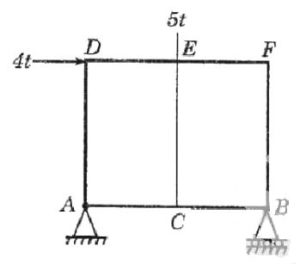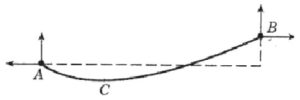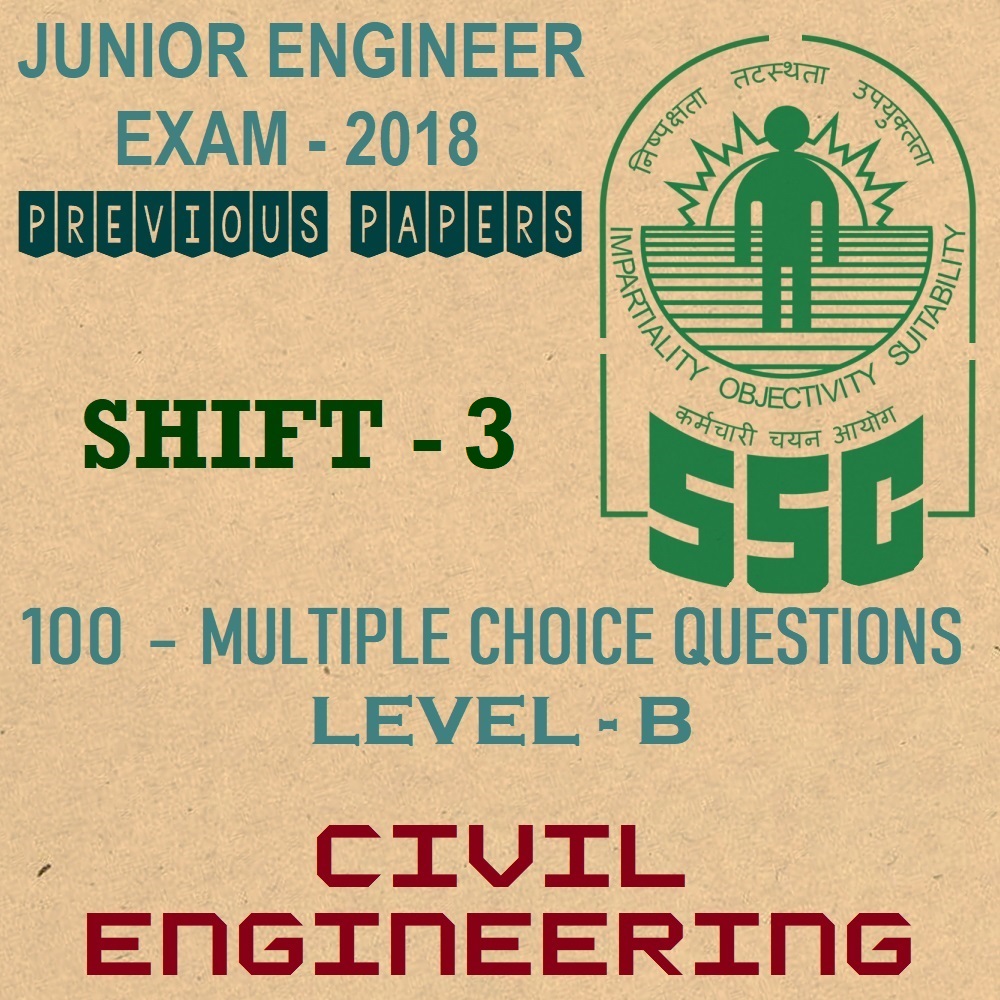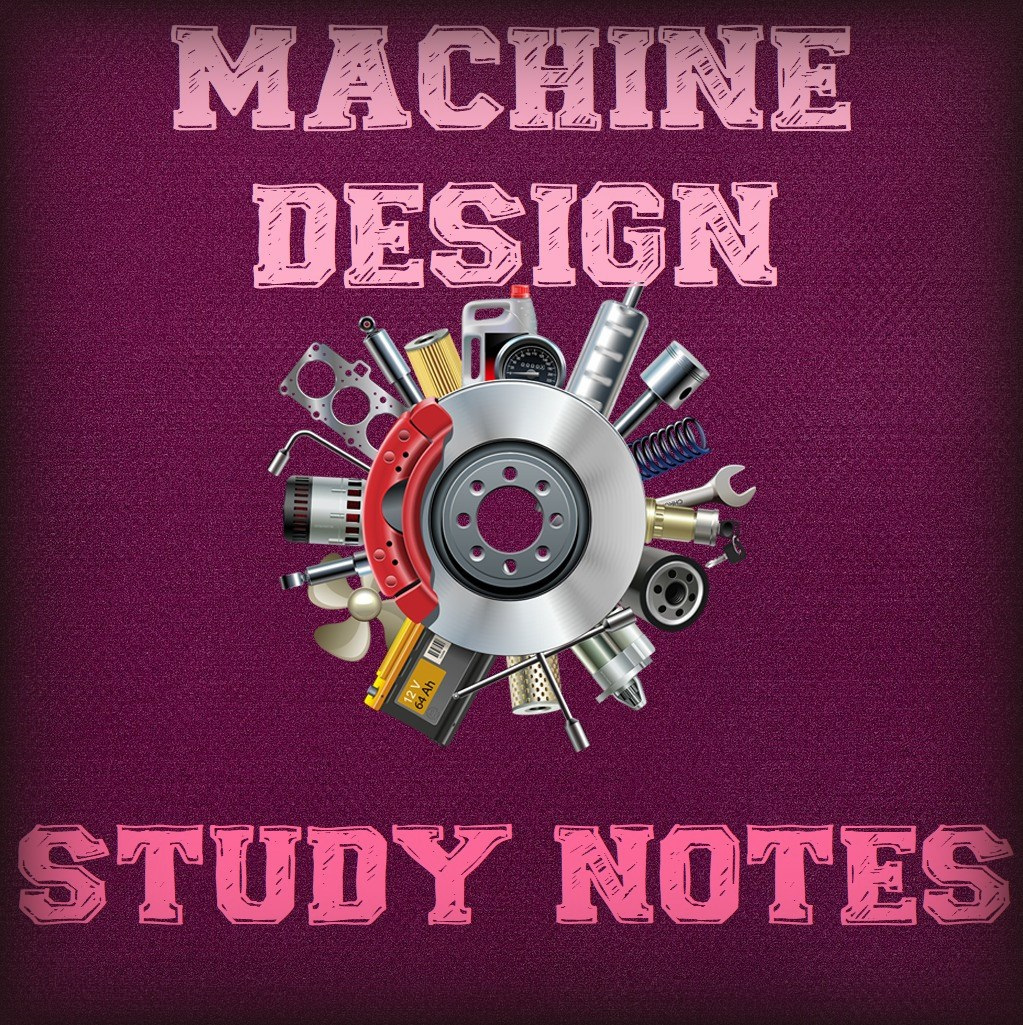SSC Junior Engineer Exam Paper – 2018 “held on 23 January 2018” Morning Shift (Civil Engineering)
Q 1: Which one of the following brick is suitable for the high-class brick masonry ?
Options:
1) Bull nose bricks
2) Jhumb bricks
3) Modular bricks
4) Under burnt bricks
Answer: Modular bricks
Q 2: Which of the following is the correct reason for soaking the brick in water before its use ?
Options:
1) For preventing adsorption of moisture from mortar by bricks
2) For reducing air void
3) For reducing efflorescence
4) For cleaning
Answer: For preventing adsorption of moisture from mortar by bricks
Q 3: Which of the following compound affects the ultimate strength of cement ?
Options:
1) Dicalcium silicate
2) Tetracalcium alumino-ferrite
3) Tricalcium aluminate
4) Tricalcium silicate
Answer: Dicalcium silicate
Q 4: Refractory bricks are generally used to resist_____.
Options:
1) Chemical action
2) Dampness
3) High temperature
4) Weathering action
Answer: High temperature
Q 5: Which of the following is the correct percentage of maximum moisture content based in sand where change in volume is maximum ?
Options:
1) 5%
2) 9%
3) 12%
4) 15%
Answer: 5%
Q 6: Which one of the following cement is best for the marine works ?
Options:
1) Blast furnace slag cement
2) High alumina cement
3) Low heat Portland cement
4) Rapid hardening cement
Answer: Blast furnace slag cement
Q 7: Which of the following is limit of the moisture content that can be achieved in the air drying process of timber ?
Options:
1) 10%
2) 15%
3) 20%
4) 28%
Answer: 15%
Q 8: Which of the following proportion of cement and standard sand is used in cement mortar while testing the compressive and tensile strength of cement ?
Options:
1) 1:2
2) 1:3
3) 1:4
4) 1:6
Answer: 1:3
Q 9: Which of the following is the important factor that affects the shrinkage of cement concrete ?
Options:
1) Quantity of cement
2) Size of coarse aggregates
3) Size of the fine aggregate
4) Amount of water added during mixing of concrete
Answer: Amount of water added during mixing of concrete
Q 10: Calculate the proportion (in percentage) of fine aggregate in combined aggregate so that the fineness modulus of the combined aggregate becomes 6.4. The fitness modulus of coarse aggregate and fine aggregate in the concrete mix is 7.6 and 2.8 respectively.
Options:
1) 20
2) 33.33
3) 35
4) 66.6
Answer: 33.3
Q 11: Which of the following unit is used for estimation of D.P.C. work ?
Options:
1) Number
2) Cubic meter
3) Running meter
4) Square meter
Answer: Square meter
Q 12: Calculate the quantity of the sand required (in cubic meter) in 20 cubic meters of reinforced cement concrete (1:2:4).
Options:
1) 2.87
2) 4.4
3) 5.7
4) 8.8
Answer: 8.8
Q 13: Deduction at cross wall for total length of the central line is______.
Options:
1) Half of thickness of wall
2) No deduction
3) Thickness of wall
4) Twice of the thickness of wall
Answer: Thickness of wall
Q 14: Calculate the quantity of the earth works in cubic meter for a canal embankment of 100 m long having cross section areas at the two sections are 20 Square meters and 80 square meters. Use trapezoidal method.
Options:
1) 2000
2) 5000
3) 7000
4) 10000
Answer: 5000
Q 15: Accuracy in measurement of the area should be_____.
Options:
1) 1 square centimeter
2) 10 square centimeter
3) 100 square centimeter
4) 1 square meter
Answer: 100 square centimeter
Q 16: For estimation of painted area of corrugated asbestos cement sheets, percentage increase in area above the painted area is_____.
Options:
1) 10%
2) 14%
3) 20%
4) 25%
Answer: 20%
Q 17: Which of the following is the purpose of the valuation ?
Options:
1) Approximate estimation of cost
2) Analysis of rate
3) Detailed estimation of cost
4) Taxation
Answer: Taxation
Q 18: An electric generator is installed in the building at a cost of Rs. 50,000. Calculate the annual sinking fund (Rs.) required to be deposited to accumulate the whole amount of 5% compound interest. Assume the life of the electric generator as 10 years.
Options:
1) 1535
2) 30695
3) 3975
4) 79503
Answer: 3975
Q 19: No deduction is made for opening in estimation of masonry work up to______.
Options:
1) 1 square centimeter
2) 10 square centimeter
3) 100 square centimeter
4) 1000 square centimeter
Answer: 1000 square centimeter
Q 20: Calculate the weight (kg) per meter length of 25 mm diameter steel bar place at a spacing of 250 mm center by center for 1 meter.
Options:
1) 0.96
2) 3.85
3) 7.7
4) 15.43
Answer: 15.43
Q 21: Which one is the upper limit of survey area (square kilometer) for use of plane survey ?
Options:
1) 250
2) 300
3) 350
4) 450
Answer: 250
Q 22: Which one is the smallest scale ?
Options:
1) 1:100
2) 1:500
3) 1:1,000
4) 1:2,500
Answer: 1:2,500
Q 23: A line of true length 398 m when measured by a chain of 20m chain is recorded to be 400 m. What is the actual length of the chain (in m) ?
Options:
1) 19.9
2) 20.1
3) 20.4
4) 21.5
Answer: 19.9
Q 24: Calculate the correction for temperature for a tape of length ‘L’, if the increase in temperature is ‘T’ above the standard temperature. The coefficient of the temperature for tape material is ‘a’
Options:
1) aT / L
2) – aT / L
3) + aTL
4) – aTL
Answer: + aTL
Q 25: What is the correct sequence of the temporary adjustment of level ?
Options:
1) Centering, leveling and settling
2) Leveling, setting and centering
3) Setting, centering and leveling
4) Setting, leveling and centering
Answer: Setting, centering and leveling
SSC Junior Engineer All Previous Papers
Q 26: The values of whole circle bearing vary from______.
Options:
1) 0o to 90o
2) 00 to 180o
3) 0o to 270o
4) 0o to 360o
Answer: 0o to 360o
Q 27: Which of the following statement is correct for proper adjustment of the theodolite ?
Options:
1) Axis of plate level is perpendicular to the horizontal axis.
2) Line of collimation is perpendicular to the horizontal axis.
3) Line of collimation is parallel to the vertical axis.
4) Line of collimation is perpendicular to the vertical axis.
Answer: Line of collimation is perpendicular to the horizontal axis.
Q 28: Which of the following are correct for sensitivity of the bubble tube ?
Options:
1) Sensitivity decreases with increase in internal radius of the tube.
2) Sensitivity decreases with increase with increase in diameter of the tube.
3) Sensitivity increase with decrease in length of the tube.
4) Sensitivity increases with decrease in viscosity of the liquid.
Answer: Sensitivity increases with decrease in viscosity of the liquid.
Q 29: Calculate the curvature correction (in m) if distance between the instrument and staff is 500 m.
Options:
1) 0.0196
2) – 0.0196
3) 0.0028
4) – 0.0028
Answer: – 0.0196
Q 30: Calculate the volume of the earthwork (in cubic meter) using trapezoidal method if the cross section areas of the three section of embankment at an interval of 20 m are 40 square meters, 50 square meters and 80 square meters.
Options:
1) 1067
2) 1700
3) 2200
4) 3200
Answer: 2200
sp;
Q 31: The_____soil transported by the gravitational forces.
Options:
1) Alluvial soil
2) Colluvial soil
3) Loess
4) Till
Answer: Colluvial soil
Q 32: Which of the following is determined with the help of pycnometer ?
Options:
1) Dry density and specific gravity
2) Void ratio and dry density
3) Water content and specific gravity
4) Water content and void ratio
Answer: Water content and specific gravity
Q 33: The cell pressure and pore water pressure is increased from 0.1 N/sq. m to 0.26 N/sq. m and 0.07 N/sq.m respectively in the triaxial test. The Skempton’s pore pressure parameter is given by_____.
Options:
1) – 3
2) – 0.5
3) 0.5
4) 2
Answer: 0.5
Q 34: Which one of the following shows time factor (approximate), for 50% degree of consolidation ?
Options:
1) 0.2
2) 0.5
3) 1
4) 2
Answer: 0.2
Q 35: Which one of the following is true about ideal fluid ?
Options:
1) It is compressible.
2) It is incompressible.
3) It has high sheer force.
4) It has high value of viscosity.
Answer: It is incompressible.
Q 36: The diameter of droplet is 0.075 mm. What is the intensity of the pressure (N.sq. cm) developed in the droplet by surface tension of 0.000075 N/mm ?
Options:
1) 0.4
2) 0.6
3) 0.8
4) 1
Answer: 0.4
Q 37: A rectangular block of dimensions 2 m x 1 m x 1 m is floating in the water with immersing depth of 0.5 m. What is the weight of block (kN) if unit weight of water is 10 kN/cubic meter.
Options:
1) 5
2) 10
3) 15
4) 20
Answer: 10
Q 38: On which principle equation of continuity is based ?
Options:
1) Conservation of energy
2) Conservation of mass
3) Conservation of momentum
4) All option are correct
Answer: Conservation of mass
Q 39: If Reynolds numbers are 1000,000, then what is the approximate value of friction for the smooth pipe ?
Options:
1) 0.1
2) 0.01
3) 0.001
4) 0.0001
Answer: 0.01
Q 40: Which one of the following is correct for impulse turbine ?
Options:
1) Always operates in submerged condition
2) Converts pressure head into velocity with the help of vanes
3) Operates by initial complete conversion to kinetic energy
4) Operates by initial complete conversion to potential energy
Answer: Operates by initial complete conversion to kinetic energy
Q 41: When the water drawn from the central hole made in wash hand basin, the type of flow of water is_____.
Options:
1) Forced vortex
2) Free vortex
3) Tangential flow
4) Transitional flow
Answer: Free vortex
Q 42: Which of the following turbine is suitable to generate the power of 10,000 hp, working at the speed of 500 rpm under a head of 81 m ?
Options:
1) Propeller
2) Francis
3) Kaplan
4) Pelton
Answer: Francis
Q 43: Calculate the specific energy (m-kg / kg) of the flow if the velocity of flow is 2.22 m/s and depth of flow is 1 m.
Options:
1) 1.25
2) 2.22
3) 3.22
4) 4.22
Answer: 1.25
Q 44: The sphere of diameter 0.02 m is falls in the fluid of kinematic viscosity 10 stokes with the terminal velocity of 0.02 m/s. What is the value of coefficient of drag on the falling sphere ?
Options:
1) 40
2) 60
3) 80
4) 100
Answer: 60
Q 45: As one moves from head of the canal to the field, the duty of the water_____.
Options:
1) Decreases
2) Either increases or decreases
3) Increases
4) Remains constant
Answer: Increases
Q 46: Which of the following is the correct assumption of the kennedy’s theory ?
Options:
1) Shape of regime channel is semicircular.
2) Slit is in Suspension due to buoyancy force.
3) Slit is in suspension due to eddy formed from bottom of channel.
4) Slit is in suspension due to eddy formed from wetted perimeter of channel.
Answer: Slit is in suspension due to eddy formed from bottom of channel.
Q 47: What is the value of the lateral coefficient of the friction as per the IRC ?
Options:
1) 0.007
2) 0.01
3) 0.15
4) 0.3
Answer: 0.15
Q 48: Calculate the safe stopping sight distance (in m) for the descending gradient of 3% for a design speed of 80 km/h. Take coefficient of friction as 0.35 and total reaction time as 2 seconds.
Options:
1) 110.82
2) 123.26
3) 1018.41
4) 1092
Answer: 123.26
Q 49: Which of the following is the minimum limit (ppm) of the dissolved oxygen that must be in the water for survival of aquatic life ?
Options:
1) 1
2) 4
3) 10
4) 40
Answer: 4
Q 50: A stream has flow of 20 cumecs and BOD concentration of 10 mg/l receives the industrial waste water having flow of 1.5 cumecs and BOD concentration of 250 mg/l. What is the BOD concentration (mg/l) of stream at downstream point of meeting of stream with industrial waste ?
Options:
1) 2.67
2) 12.09
3) 13
4) 26.74
Answer: 26.74
SSC Junior Engineer All Previous Papers
Q 51: A riveted joint may experience
Options:
1) Shear failure
2) Shear failure of plates
3) Bearing failure
4) All option are correct
Answer: All option are correct
Q 52: If p and d are pitch and gross diameter of rivets, the efficiency (η) of the riveted joint is given by
Options:
1) η = p/(p-d)
2) η = p/(p+d)
3) η = (p-d)/p
4) η = (p+d)/p
Answer: η = (p-d)/p
Q 53: If the moment of inertia of a section about its axis is I and its effective sectional area is A, its radius of gyration r about the axis is
Options:
1) r = I/A
2) r = √(I/A)
3) r = √(A/I)
4) None of these
Answer: r = √(I/A)
Q 54: Allowable working stress corresponding to the slenderness ratio of double angles placed back to back and connected to one side of a gusset plate is reduced to
Options:
1) 50%
2) 60%
3) 70%
4) 80%
Answer: 80%
Q 55: According to I.S. : 800 – 1871, lacing bars resist transverse shear equal to______.
Options:
1) 1.0% of the axial load
2) 2.0% of the axial load
3) 2.5% of the axial load
4) 3.0% of the axial load
Answer: 2.5% of the axial load
Q 56: Pick up the correct statement from the following
Options:
1) Loaded columns are supported on column bases
2) Column bases transmit the column load to the concrete foundation
3) Column load is spread over a large area on concrete
4) All option are correct
Answer: All option are correct
Q 57: In the composition of good bricks, the total content of slit and clay, by weight should not be less than
Options:
1) 20%
2) 30%
3) 50%
4) 75%
Answer: 50%
Q 58: In factory buildings, the horizontal beams spanning between the wall columns supporting a wall covering are called
Options:
1) Stringers
2) Trimmers
3) Girts
4) Lintels
Answer: Girts
Q 59: The average shear stress (in kg/ cm2) for rolled beam section, is
Options:
1) 845
2) 945
3) 1025
4) 1500
Answer: 945
Q 60: Web crippling generally occurs at the point where
Options:
1) Bending moment is maximum
2) Shearing force is minimum
3) Concentrated loads act
4) Deflection is maximum
Answer: Concentrated loads act
Q 61: The strength and quality of concrete, depends upon:
Options:
1) Grading of aggregates
2) Surface area of aggregates
3) Shape of aggregates
4) All option are correct
Answer: All option are correct
Q 62: The process of adding water to lime to convert it into a hydrated lime is termed as :
Options:
1) Watering
2) Baking
3) Hydration
4) Slaking
Answer: Slaking
Q 63: If aggregates completely pass through a sleve of size 75 mm and are retained on a sleve of size 60 mm, the aggregates will be known as elongated aggregate if its length is not less than
Options:
1) 81.5 mm
2) 91.5 mm
3) 101.5 mm
4) 121.5 mm
Answer: 121.5 mm
Q 64: The calcinations of pure lime result in:
Options:
1) Quick lime
2) Hydraulic lime
3) Hydrated lime
4) Fat lime
Answer: Quick lime
Q 65: Pick up the correct statement from the following
Options:
1) An increase in water content must be accompanied by an increase in cement content
2) Angular and rough aggregates reduce the workability of the concrete
3) Large size aggregates increase the workability due to lesser surface area
4) All option are correct
Answer: All option are correct
Q 66: According to I.S. 456, the number of grades of standard concrete mixes are
Options:
1) 3
2) 5
3) 6
4) 7
Answer: 7
Q 67: Curing a concrete for long period ensures better
Options:
1) Volume stability
2) Strength
3) Water resistance
4) All option are correct
Answer: All option are correct
Q 68: The main object of compaction of concrete is
Options:
1) To eliminate air holes
2) To achieve maximum density
3) To provide intimate contact between the concrete and embedded materials.
4) All option are correct
Answer: All option are correct
Q 69: Construction joints are provided
Options:
1) Where B.M and S.F are small
2) Where the member is supported by other member
3) At 18 m apart in huge structures
4) All option are correct
Answer: All option are correct
Q 70: Pick up the correct statement from the following
Options:
1) Construction Joints are necessarily planned for their locations
2) Expansion joints are provided to accommodate thermal expansion
3) Construction joints are provided to control shrinkage cracks
4) All option are correct
Answer: All option are correct
Q 71: Grading of sand causes great variation in
Options:
1) Workability of concrete
2) Strength of concrete
3) Durability of concrete
4) All option are correct
Answer: All option are correct
Q 72: The light weight aggregates are obtained from
Options:
1) Sedimentary rocks
2) Metamorphic rocks
3) Igneous rocks
4) Volcanic source
Answer: Volcanic source
Q 73: The bulk density of aggregates depends upon its
Options:
1) Shape
2) Grading
3) Compaction
4) All option are correct
Answer: All option are correct
Q 74: Batching error means inaccuracy in the quantity of
Options:
1) Aggregates
2) Cement
3) Water
4) All option are correct
Answer: All option are correct
Q 75: The center needle of the attachment of the Vicat plunger projects the circular cutting edge by
Options:
1) 0.2 mm
2) 0.5 mm
3) 1 mm
4) 5 mm
Answer: 0.5 mm
SSC Junior Engineer All Previous Papers
Q 76: The flakiness index of aggregates is the percentage by weight of particles in it whose thickness is less than______.
Options:
1) 2/5th of mean length
2) 3/5th of mean length
3) 4/5th of mean length
4) None of these
Answer: 3/5th of mean length
Q 77: The field test for the quality of cement consists in putting a small quantity of cement in a bucket containing water. A good quality cement will:
Options:
1) Immediately dissolve in the water
2) Float on the water surface
3) Sink to the bottom of the bucket
4) Produce the steam
Answer: Float on the water surface
Q 78: For the repair of roads
Options:
1) Low-heat cement is used
2) Rapid-hardening cement is used
3) High-alumina cement is used
4) Sulphate-resisting cement is used
Answer: Rapid-hardening cement is used
Q 79: The advantage of reinforced concrete, is due to
Options:
1) Monolithic character
2) Fire-resisting and durability
3) Economy because of less maintenance cost
4) All option are correct
Answer: All option are correct
Q 80: By over-reinforcing a beam, the moment of resistance can be increased not more than
Options:
1) 10%
2) 15%
3) 20%
4) 25%
Answer: 25%
Q 81: Spacing of stirrups in a rectangular beam, is
Options:
1) Kept constant throughout the length
2) Decreased towards the centre of the beam
3) Increased at the ends
4) Increased at the center of the beam
Answer: Increased at the center of the beam
Q 82: The radius of a bar bend to form a hook should not be less than
Options:
1) Twice the diameter
2) Thrice the diameter
3) Four times the diameter
4) Five times the diameter
Answer: Twice the diameter
Q 83: Steel bars are generally connected together to get greater length than the standard length by providing
Options:
1) Straight bar splice
2) Hooked splice
3) Dowel splice
4) All option are correct
Answer: All option are correct
Q 84: The diameter of longitudinal bars of a column should never be less than
Options:
1) 6 mm
2) 8 mm
3) 10 mm
4) 12 mm
Answer: 12 mm
Q 85: The maximum ratio of span to depth of a slab simply supported and spanning in two directions is
Options:
1) 25
2) 30
3) 35
4) 40
Answer: 35
Q 86: For a continuous slab supported at ends and carried over intermediate beams
Options:
1) Max. sagging B.M. for the end spans = +(wl2)/10
2) Max. hogging B.M. over penultimate supports is equal to –(wl2)/10
3) Max. sagging B.M. for the interior spans = + (wl2)/12
4) All option are correct
Answer: All option are correct
Q 87: The advantage of a concrete pile over a timber pile is
Options:
1) No decay due to termites
2) No restriction on length
3) Higher bearing capacity
4) All option are correct
Answer: All option are correct
Q 88: A raft foundation is provided if its area exceeds the plan area of the building by
Options:
1) 10%
2) 20%
3) 30%
4) 50%
Answer: 50%
Q 89: The forces in the members of simple trusses may be analysed by
Options:
1) Graphical method
2) Method of joints
3) Method of sections
4) All option are correct
Answer: All option are correct
Q 90: A rolled steel joist is simply supported at its end and carries a uniformly distributed load which causes a maximum deflection of 10 mm and slope at the ends of 0.002 radian. The length of the joist will be
Options:
1) 10 m
2) 12 m
3) 14 m
4) 16 m
Answer: 16 m
Q 91: A lift of weight W is lifted by a rope with an acceleration f. If the area of cross-section of the rope is A, the stress in the rope is
Options:
1) w (1+f/g)/A
2) (1-g/f)/A
3) w (2+f/g)/A
4) w (2+g /f)/A
Answer: w (1+f/g)/A
Q 92: A material which obey’s Hooke’s law is subjected to direct stress σo. At its elastic limit, which of the following statements is true ?
Options:
1) Strain is equal to σo/E
2) Maximum shear stress = σo/2
3) Strain energy = (σo2/2E) x volume
4) All option are correct
Answer: All option are correct
Q 93: Keeping the depth d constant, the width of a cantilever of length l of uniform strength loaded with a uniformly distributed load w varies from zero at the free end and
Options:
1) (2w/σd2) * l2 at the fixed end
2) (3w/σd2) * l2 at the fixed end
3) (3w/σd) * l2 at the fixed end
4) (5w/σd2) * l2 at the fixed end
Answer: (3w/σd) * l2 at the fixed end
Q 94: The force in EC of the truss shown in the figure below is

Options:
1) Zero
2) 5t tension
3) 5t Compression
4) 4t tension
Answer: 5t Compression
Q 95: In the cable shown in the figure below, the minimum tension occurs at

Options:
1) A
2) B
3) C
4) Between A and C
Answer: C
Q 96: A shaft is subjected to a bending moment M and a torque T simultaneously. The ratio of the maximum bending stress to maximum shear stress developed in the shaft is
Options:
1) M/T
2) T/M
3) 2M/T
4) 2T/M
Answer: 2M/T
Q 97: The shape factor of standard rolled beam section varies from
Options:
1) 1.10 to 1.20
2) 1.20 to 1.30
3) 1.30 to 1.40
4) 1.40 to 1.50
Answer: 1.10 to 1.20
Q 98: In plastic analysis, the shape factor for a triangular section is
Options:
1) 1.5
2) 1.34
3) 2.34
4) 25
Answer: 2.34
Q 99: Shear center of a half circular section of radius r and of constant thickness, lies at a distance of x from the center, where x is
Options:
1) r/π
2) 2r/ π
3) 3r/ π
4) 4r/ π
Answer: 4r/ π
Q 100: A three hinged arch is generally hinged at its supports and
Options:
1) At one quarter span
2) At the crown
3) Anywhere in the rib
4) None of these
Answer: Anywhere in the rib



